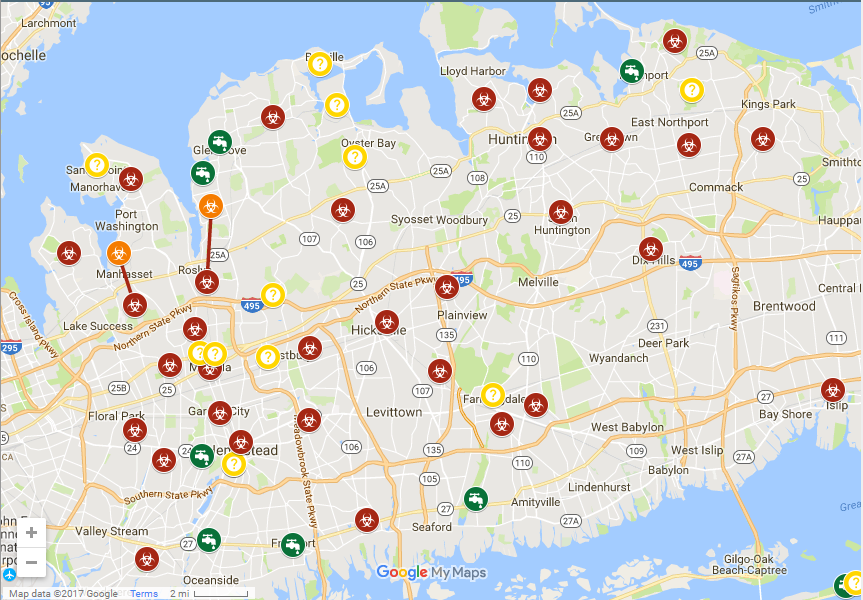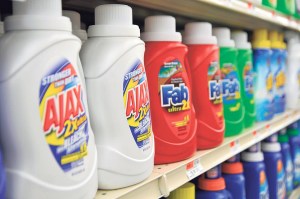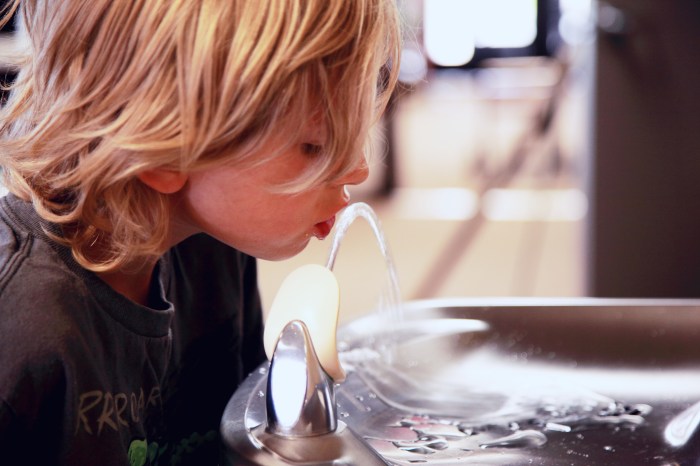Green group warns of toxins, district says water is safe to drink

A report by the Farmingdale-based Citizens Campaign for the Environment (CCE) reveals elevated levels of a possible carcinogen in water districts throughout Long Island. But a consultant for the Plainview Water District stresses that consumers shouldn’t swallow the rhetoric so easily.
Found in various personal-care products, the cancer-causing chemical, 1,4-dioxane, is listed as “likely to be carcinogenic to humans” by the Environmental Protection Agency (EPA). And according to CCE, Long Islander water supplies have the highest levels of 1,4-dioxane in the nation.
In response to the findings, the group has devised an interactive map at www.citizenscampaign.org/campaigns.dioxane.asp so that residents can investigate contamination levels in their local groundwater.
According to the map, in the Plainview Water District, with 12 wells serving a population of about 35,000 in Plainview, Old Bethpage and part of Syosset, 1,4-dioxane was detected in levels above the EPA’s cancer risk guideline.
But James Neri, an engineer and consultant for the Plainview Water District, said that consumers would have to ingest an impossibly large amount of water before it became detrimental to health.
 “You would have to consume two liters per day for 70 years before you would have a one-in-a-million increased chance of cancer,” said Neri. “They are trying to compel the EPA to move faster, and that’s not necessarily a bad thing, but they are pandering to the side of fear.”
“You would have to consume two liters per day for 70 years before you would have a one-in-a-million increased chance of cancer,” said Neri. “They are trying to compel the EPA to move faster, and that’s not necessarily a bad thing, but they are pandering to the side of fear.”
Neri said the study has been around since 2014-15 and since then, water districts throughout Long Island have worked to vet new technologies aimed at stemming the tide of dioxane.
“The water is absolutely safe to use,” said Neri. “But the district has undertaken the investigation to determine what proper route to take to deal with the chemical.”
Dioxane gets into the water through products that contain it, including laundry detergent, soap, shampoo and body wash, according to CCE’s report. That report reveals that up to 46 percent of personal-care products contain the chemical, which is not added to consumer goods but rather is an unwanted byproduct of ethoxylation—a process used to reduce skin irritation caused by petroleum-based ingredients. Once in the groundwater and soil, the report stated, it is hard to remove and known as a “legacy” pollution—pollution left behind from past industrial activities.
“While avoiding products in our personal lives is a good first step, we need New York state to act now to prevent further exposure to dioxane through our drinking water,” CCE said.
Senators Kirsten Gillibrand and Chuck Schumer recently announced legislation that would require the EPA to develop a maximum contaminate level for 1,4-dioxane and other hazardous chemicals in public water systems. As 1,4-dioxane is currently unregulated in the Safe Water Drinking Act, this legislation would require the EPA to create safety guidelines and determine legally enforceable standards that apply to water systems.
“We’ve seen very clearly how much damage can happen to our local drinking water supplies when toxic chemicals like PFOA, PFOS, 1,4-dioxane, and perchlorate aren’t monitored by the EPA,” said Gillibrand, a member of the Senate Environment and Public Works Committee. “New Yorkers should be able to drink water without having to worry about whether it’s safe. Anything less than that standard is unacceptable.”
Schumer and Gillibrand called on the EPA to prioritize the risk evaluation for 1,4-dioxane. Schumer also urged Saint-Gobain Performance Plastics to work proactively with federal and state environmental officials to define and clean up another contamination in Hoosick Falls, NY.
“With the recent incidents of contaminated drinking water in New York, it’s crystal clear that we need a maximum contaminant level set by the EPA for perfluorinated compounds like PFOA/PFOS, 1,4-dioxane and perchlorate,” said Schumer. “I will use every ounce of my clout to work with my colleagues and make sure this common sense public health bill to ensure safe drinking water is passed.”































